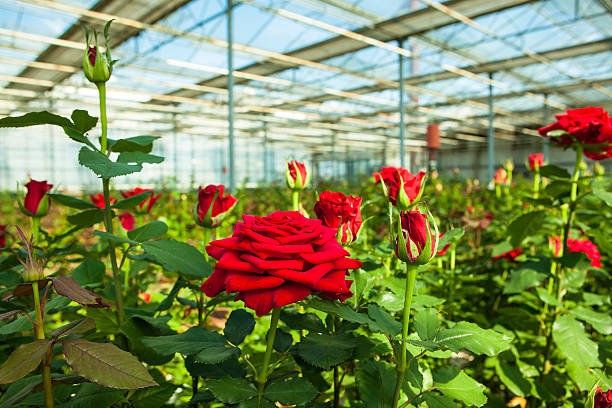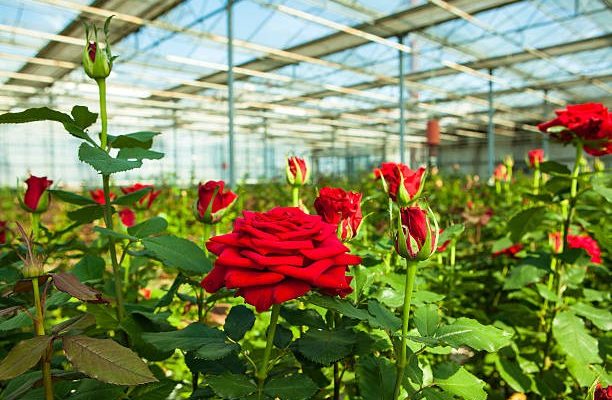When it comes to farming and gardening, you might have come across the terms “nursery” and “greenhouse.” While they share some similarities, there are also important differences that can guide smart choices for your crop production.
Making a small farm profitable requires thoughtful planning. Opting for high-value crops like flowers, herbs, and veggies on a smaller scale can work well.
Connecting with the right market, be it through farmers’ markets, or online platforms, is key for commercial success. For retail greenhouse structures, it’s all about creating the best-growing conditions to yield successful crops and maximize profits.
In a nursery, various plants like trees, shrubs, flowers, and veggies are nurtured until they reach a specific size for planting in a permanent spot. Each plant type has its designated area with specific growth conditions like temperature and light carefully met.
Contrastingly, a greenhouse is a specialized building designed to create the perfect growth environment. It regulates temperature, light, humidity, and ventilation, usually built from glass or plastic.
Greenhouses are a farmer’s delight, enabling year-round cultivation and even allowing non-local plants to thrive, like tropical ones in colder climates.

Yet both terms are used interchangeably by most noob gardeners or novice agri-enthusiasts.
Is Plant Business Profitable?
Getting into the plant business can be a wonderfully profitable and fulfilling venture for newcomers. With the right approach and a touch of strategic planning, you’ll find yourself nurturing not only plants but also a thriving business.
Plants have an incredible demand, be it for beautifying homes, landscaping, or even the growing interest in sustainable living. This demand sets the stage for a profitable journey. However, like any business, success requires careful planning. This is where tools like greenhouse structures come into play.
Greenhouses offer an array of benefits. They provide a controlled environment, shielding plants from harsh weather conditions and pests, ultimately leading to healthier growth.
With a greenhouse, you gain the power to extend your growing season, allowing you to produce crops all year round, a significant advantage in the competitive market.
Strategic planning also involves selecting the right types of plants that align with your climate and market demand. High-value plants like herbs, specialty flowers, and unique vegetables can offer attractive returns on your investment.
Moreover, with a greenhouse, you have the flexibility to experiment with various plants and techniques, learning and adapting as you go. It’s like having a laboratory for your plants, allowing you to fine-tune your methods for maximum yield and quality.
So, to all the newcomers considering a plant business, take that step with confidence! With thoughtful planning and the aid of tools like greenhouse structures, you’re well on your way to reaping the rewards of a profitable and fulfilling plant-based venture.
Also Read: 5 Ways Fertilizer Helps Keep Your Lawn Healthy And Green
Points For Starting A Plant Business
Starting your own plant business can be an exciting and rewarding journey. Here are six essential steps to help you get started:
-
Passionate Plant Selection
Begin by choosing plants that align with your passion and local demand. Are you drawn to vibrant flowers, lush herbs, or perhaps unique succulents?
For instance, if you live in a region with a love for exotic plants, consider cultivating rare orchids or tropical palms. Select plants that are hardy in the local zones.
If there are other demanding species, try to grow them in a contained atmosphere.
-
Strategic Business Plan
Craft a solid business plan that outlines your goals, target market, pricing strategy, and financial projections.
A well-thought-out plan will serve as your roadmap to success, helping you navigate challenges and seize opportunities.
-
Greenhouse Oasis
Utilize a greenhouse to create an optimal growing environment. Greenhouses protect from weather extremes and pests, allowing you to grow a wider variety of plants year-round.
Imagine nurturing delicate seedlings during chilly months or even cultivating out-of-season produce like juicy tomatoes in the winter.
You can cater to niche spaces in your locality that grow heirloom produce that cannot be easily sourced. This will attract consumers like restaurants who believe in serving farm-to-fork concepts and avail their requirements from direct growers.
-
Quality Cultivation Techniques
Focus on quality cultivation techniques to ensure healthy, robust plants. Experiment with different soil mixes, watering schedules, and pruning methods to perfect your craft.
Your customers will appreciate the care you put into producing vibrant, thriving plants. Keep checking the pH of the soil and add organic matter to maintain the required acidity in the soil for perfect growth.
-
Effective Marketing
Spread the word about your plant business through effective marketing. Utilize social media platforms, local farmers’ markets, and even collaborate with local businesses like cafes or boutiques to showcase and sell your plants.
Engaging photos of your flourishing greenhouse can captivate potential customers’ attention. Advertise through social media platforms by showcasing your work. A timelapse video of seed to flower will garner attention and attract prospective customers to your store.
-
Exceptional Customer Care
Build lasting relationships with your customers through exceptional customer care. Provide gardening tips, personalized recommendations, and a warm, inviting shopping experience.
Your enthusiasm for plants and willingness to share your knowledge will create a loyal customer base. Always greet people with a smile so that they return whenever they need plants or gardening material.
Also Read: Living a Back To Nature Lifestyle: 10 Tips To Help You Get Started
Conclusion:
Remember, just like nurturing plants, growing a plant business takes time, patience, and dedication. With each step, you’ll cultivate not only beautiful greenery but also a thriving business that brings joy to you and your customers.
Opting for a career in live plants entails grasping the intricacies of logistics and the reality of plant dieback. While it’s a rewarding path, it’s essential to recognize the balance between the beauty of the profession and the challenges it presents.
Success hinges on navigating these factors adeptly, ensuring your plants flourish and your business thrives. Hence, apart from getting the sequence of your work right, you need to understand other dynamics of business like supply chain management.
If you have non-local customers who receive plants through courier packages, then you need to tie up with a good logistics partner who will deliver on time. Note these points, and you are good to rock it.




